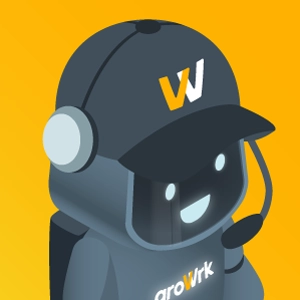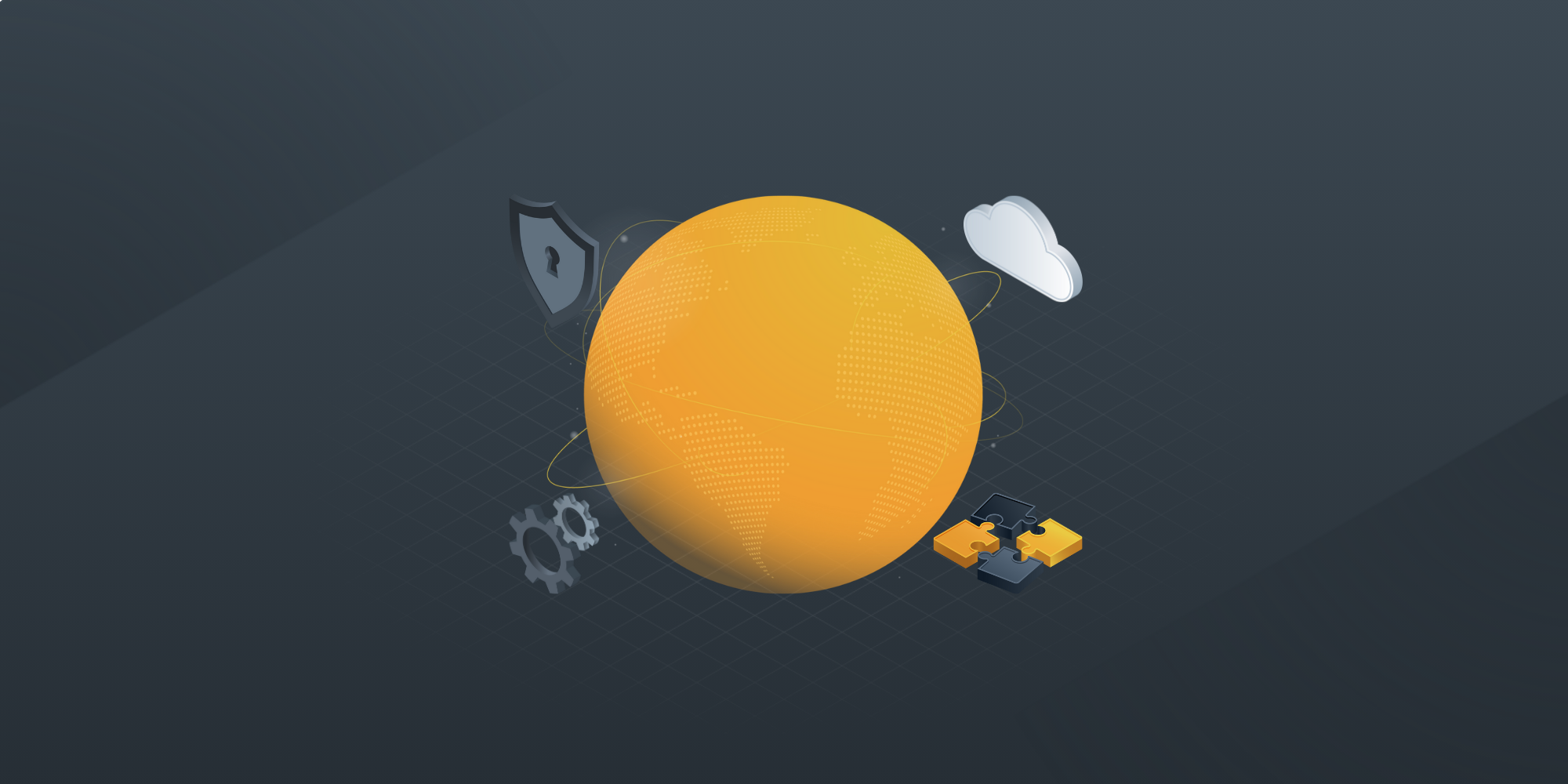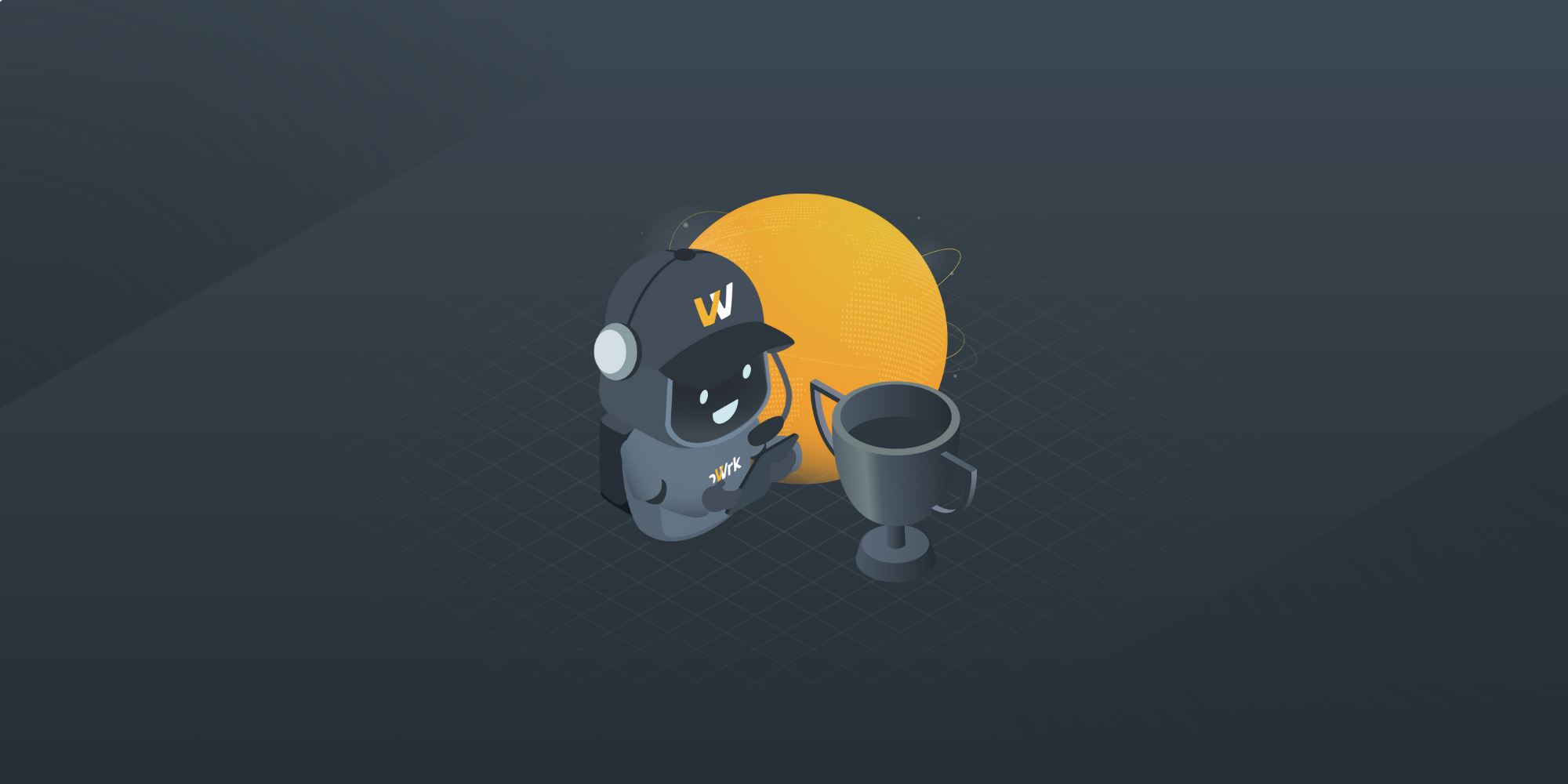Top Android MDM solutions for efficient device management
 GroWrk Team
GroWrk Team
As remote work and BYOD policies continue to grow, securing and managing mobile devices has become mission-critical. According to market forecasts the global Unified Endpoint Management (UEM) market will be worth €15.9 billion by 2026 with Mobile Device Management (MDM) accounting for around 42% of that market share - so it’s not going away anytime soon.
Organisations that use a single UEM tool score 70% higher on workplace maturity assessments so there’s a clear operational and security benefit to streamlined endpoint management.
This guide compares the top Android MDM solutions available today, their features, benefits and deployment models so you can choose the right one for your needs whether that’s robust security, improved productivity or flexible customisation.
Key takeaways
-
Mobile Device Management (MDM) is essential to secure corporate data on mobile and personal devices especially with the rise of remote work and it includes features like tracking, monitoring and data erasure.
-
Key features of Android MDM solutions are security enforcement through policies like remote wipe, productivity through centralized application management and customization of device configurations for business needs.
-
Choosing the right MDM deployment model (cloud-based, on-premise or hybrid) is crucial and should be based on an organization’s requirements for scalability, security and IT resources.
Understanding Mobile Device Management (MDM)

Mobile Device Management (MDM) is a software and policy framework that allows IT teams to control, secure and monitor smartphones and tablets used for work. As remote and hybrid models grow, MDM is key to protecting corporate data on personal or company owned Android devices.
A good MDM platform allows IT admins to track device activity, enforce security policies, deploy apps and wipe data remotely if a device is lost or stolen. This means business data is protected even outside the corporate network.
MDM is part of a broader mobility strategy:
-
Enterprise Mobility Management (EMM) goes beyond device control, it’s about app security, user experience, and data management.
-
Unified Endpoint Management (UEM) combines MDM and EMM into one platform to manage all endpoints – laptops, desktops, smartphones, and IoT devices.
This evolution from MDM → EMM → UEM reflects the need for integrated security and compliance across multiple device types.
Leading Android MDM solutions
Choosing the right Android MDM software depends on your organization’s size, industry, and security priorities. Below, we compare some of the top platforms available in 2025—highlighting their key features, advantages, drawbacks, pricing models, and ideal use cases.
- GroWrk
- IBM MaaS360
- Microsoft Intune
- NinjaOne
- Scalefusion
GroWrk

GroWrk offers a comprehensive Android MDM solution with robust security and centralized device control, built on its global IT lifecycle management platform. IT teams gain real-time visibility into devices and can enforce full security policies remotely.
-
Pricing:
-
A La Carte – pay only for procurement, recovery, or disposal.
-
Premium – monthly per-employee fee plus fixed pricing on logistics.
-
-
Advantages:
-
Centralized dashboard for Android and cross-platform management
-
Full security policy enforcement with remote control
-
Application management to maintain compliance
-
Real-time device tracking and inventory updates
-
Regular updates based on user feedback
-
-
Drawbacks:
-
Initial setup can be complex for large rollouts
-
-
Best for: Enterprises managing a global device fleet that need security, logistics, and lifecycle management in one platform.
IBM MaaS360

IBM MaaS360 is known for secure access management without requiring device-level VPNs. Its encrypted containers allow safe file sharing and reduce data leak risks.
-
Pricing: Variable by feature tier
-
Advantages:
-
Secure access to corporate resources without VPN
-
Encrypted containers for documents and collaboration
-
Integrations with SharePoint and IBM Connections
-
Strong data loss prevention controls
-
-
Drawbacks:
-
Higher costs for advanced features
-
Limited customization flexibility
-
-
Best for: Enterprises prioritizing compliance and data protection, especially those in regulated industries.
Microsoft Intune

Microsoft Intune delivers full device and app management with seamless integration into Microsoft 365. It includes built-in security and compliance features, making it ideal for organizations already in the Microsoft ecosystem.
-
Pricing: Included with Microsoft 365 subscriptions
-
Advantages:
-
Native integration with Microsoft services
-
Strong multi-platform support, including Android Enterprise
-
Compliance and conditional access policies
-
End-to-end device and app management
-
-
Drawbacks:
-
Steeper learning curve outside Microsoft environments
-
Full benefits tied to Microsoft ecosystem adoption
-
-
Best for: Businesses already running Microsoft 365 seeking unified security and management.
NinjaOne

NinjaOne specializes in endpoint and patch management with powerful automation tools that extend to Android devices.
-
Pricing: Variable by feature set
-
Advantages:
-
Cloud-based patch management accessible anywhere
-
Automated and ad-hoc scanning
-
Zero-touch automation (patching up to 90% faster)
-
Granular patch approval and rollback controls
-
-
Drawbacks:
-
Requires stable internet connectivity
-
Advanced functions can be complex for new users
-
-
Best for: IT teams focused on security and patch automation across mixed device environments.
Scalefusion

Scalefusion simplifies Android device management for SMBs, combining user-friendly tools with Android Enterprise integration.
-
Pricing: Starting at $2 per device/month
-
Advantages:
-
Kiosk mode and app whitelisting
-
Remote troubleshooting and lock capabilities
-
Geofencing and location tracking
-
Strong Android Enterprise support
-
-
Drawbacks:
-
Some advanced features locked to higher tiers
-
Limited macOS/Linux coverage
-
-
Best for: Small and mid-sized businesses needing affordable, Android-focused device control.
Key features of Android MDM solutions
Android MDM software gives IT teams a centralized platform to secure, monitor, and configure mobile devices at scale. The right solution not only protects sensitive data but also improves workforce productivity and simplifies administration. Core features include:
-
Security enforcement: Remote lock and wipe, containerization for separating work/personal data, and role-based access controls to minimize data exposure.
-
Productivity tools: Centralized app deployment, update management, and policy-based automation to ensure employees always have the right tools.
-
Customization capabilities: Pre-configured settings, zero-touch enrollment, and custom device profiles to adapt MDM to organizational workflows.
-
Monitoring and compliance: Real-time tracking of device usage, compliance reporting, and alerts on policy violations.
-
Inventory management: Dashboards that track device health, software versions, and usage history to support lifecycle decisions.
-
Automation: Streamlined onboarding, app installation, and security updates reduce manual effort and IT overhead.

Ensuring security for Android devices
Security is the core purpose of Android MDM. With company-owned and BYOD devices connecting from anywhere, organizations need reliable ways to enforce policies and safeguard sensitive data.
-
Remote lock and wipe: Prevents data exposure if a device is lost or stolen.
-
Application containerization: Keeps corporate and personal apps separate, reducing data leakage risks.
-
Regular patching and updates: Ensures devices remain protected against known vulnerabilities.
-
Role-based access controls: Restricts access so employees only use the apps and data required for their role.
-
Multi-factor authentication (MFA): Adds an extra layer of verification to prevent unauthorized access.
Security is not only technical—it’s also cultural. Pairing MDM tools with employee training on mobile security reinforces compliance and creates a workforce that understands how to protect sensitive information.
Boosting productivity with Android MDMAndroid MDM isn’t just about security—it also improves employee productivity and IT efficiency. By centralizing app and device management, IT teams can ensure employees always have the right tools at the right time.
-
Centralized app deployment: Install, update, or remove apps across all devices from a single console.
-
Silent installation and updates: Deploy apps or patches in the background without interrupting employee workflows.
-
Automation: Streamlines device setup, enrollment, and policy enforcement, reducing manual IT effort.
-
Configurable policies: Tailor app access, Wi-Fi, and VPN settings based on business needs or user groups.
The result is a simplified IT process and consistent employee experience, enabling teams to work productively without delays caused by missing apps or misconfigured devices.
Customizing device configurations
Android MDM solutions give IT the ability to standardize and customize device settings for different roles, departments or regions. This means consistency during onboarding but still allows for business workflow customization.
-
Pre-configured device settings: Apply Wi-Fi, VPN and security settings across all devices before deployment.
-
Zero-touch enrollment: Enroll and configure devices out of the box, reduce setup time and IT effort.
-
Custom profiles: Create role-based or departmental policies to control device features, apps and permissions.
-
Managed Google Play integration: Restrict app access to only approved business apps, reduce security risks from unverified downloads.
These are especially useful for large global deployments as they provide a seamless onboarding experience while giving IT total control over how Android devices are used in the workplace.
Monitoring and managing device usage effectively
Ongoing monitoring is critical to ensure Android devices remain secure, compliant, and efficient throughout their lifecycle. MDM platforms provide IT teams with visibility and control over how devices are used across the organization.
-
Real-time tracking: GPS and location monitoring to locate devices and respond quickly to loss or theft.
-
Compliance oversight: Alerts and dashboards showing whether devices meet security and usage policies.
-
Usage monitoring: Visibility into installed apps, data consumption, and device behavior to prevent misuse.
-
Inventory accuracy: Detailed records of device status, condition, and update history for better asset planning.
-
Policy enforcement: Ability to restrict device features, lock devices remotely, or wipe data in case of a security breach.
When combined with UEM, these features extend across laptops, desktops, and IoT devices—giving IT one console to enforce policies consistently across all endpoints.
This proactive oversight ensures that devices remain compliant, employees use them productively, and corporate data is always protected.
Simplifying device inventory management
Accurate inventory management is crucial for IT teams to track hardware, software, and security status across all Android devices. MDM platforms provide centralized dashboards that give real-time visibility into device fleets.
-
Comprehensive device data: Track hardware details, installed apps, OS versions, and security posture in one place.
-
Real-time status updates: Monitor battery health, connectivity, last sync time, and pending updates for each device.
-
Lifecycle history: Maintain records of device usage, assignments, and performance to guide procurement and retirement decisions.
-
Simplified equipment retrieval: Support device recovery workflows by knowing exactly where assets are and who they’re assigned to.
For example, GroWrk’s dashboard combines inventory management with lifecycle reporting, helping enterprises optimize usage, reduce waste, and plan IT resources more effectively.
These features reduce administrative burden and ensure IT teams always have an accurate picture of their mobile device environment.
Automating Android device management

Automation is a core strength of Android MDM, enabling IT teams to reduce manual work and maintain consistent device configurations across the organization.
-
Faster onboarding: Devices are configured with apps and policies immediately, with little or no IT touch.
-
Consistent compliance: Security settings, updates, and restrictions are applied automatically.
-
Lower IT overhead: Routine tasks like patching, app deployment, and policy enforcement run in the background.
With solutions like GroWrk, enterprises can scale device deployment and management globally while saving time, cutting costs, and reducing human error.
Choosing between: Cloud-based vs. on-premises MDM solutions

Selecting the right deployment model is one of the most important decisions in an MDM strategy. The choice between cloud, on-premises, or hybrid determines how scalable, secure, and resource-intensive device management will be.
-
Cloud-based MDM: Offers quick deployment, easy scalability, and lower upfront costs. Ideal for organizations that require flexibility and rapid rollouts, although it relies on stable internet connectivity and vendor data handling.
-
On-premises MDM: Provides maximum control and customization, often preferred in industries with strict compliance rules. However, it requires higher upfront investment and dedicated IT resources.
-
Hybrid MDM: Combines cloud scalability with on-premises control, but adds management complexity. Best suited for enterprises that balance flexibility with regulatory or data sovereignty requirements.
The table below summarizes the key differences at a glance:
| Deployment model | Key benefits | Considerations | Best for |
|---|---|---|---|
| Cloud-Based | Fast setup, scalable, lower upfront costs | Dependent on internet, less direct data control | Organizations prioritizing flexibility and rapid scaling |
| On-Premises | Greater control, deeper customization, enhanced security | Higher upfront costs, requires dedicated IT staff | Businesses with strict compliance and security needs |
| Hybrid | Mix of scalability and control | More complex to manage | Enterprises needing both flexibility and compliance |
Unified Endpoint Management (UEM) integration
While MDM focuses on mobile devices, UEM extends those capabilities across laptops, desktops, and IoT devices. Integrating Android MDM with UEM ensures that security and compliance policies apply consistently to every endpoint in the organization.
Key advantages of UEM integration include:
-
Consistent policy enforcement: Apply the same security, access, and compliance settings across all device types.
-
Stronger breach prevention: Centralized visibility and control reduce the chances of overlooked vulnerabilities.
-
Application governance: Manage software installations and permissions to limit shadow IT risks.
-
User-centric approach: Employees can access corporate resources securely, regardless of device or location.
-
Advanced analytics: Many UEM platforms leverage AI or machine learning to analyze behavior patterns and flag suspicious activity.
GroWrk’s platform builds on these capabilities by providing centralized control, remote security enforcement, and lifecycle management for global device fleets—all within a unified environment.
Best practices for implementing Android MDM solutions

Successful Android MDM implementation requires more than just installing software—it’s about building processes that ensure devices remain secure, compliant, and productive.
Key best practices include:
-
Define clear policies upfront: Establish security, compliance, and usage rules before deployment.
-
Start with pilot groups: Test policies and app rollouts with a small set of users to refine configurations before scaling.
-
Automate where possible: Use policy-based automation for onboarding, patching, and app management to reduce IT workload.
-
Monitor and report: Leverage dashboards and reporting tools to track device health, compliance, and performance over time.
-
Integrate with existing IT systems: Connect MDM with identity management, HR, and security platforms for streamlined workflows.
-
Plan for lifecycle management: Ensure devices are tracked from procurement to retirement, with processes in place for secure recovery or disposal.
GroWrk supports these practices with a flexible pricing model and integrations with 40+ tools, helping organizations manage devices more cost-effectively while enhancing analytics and visibility.
GroWrk: Your all-in-one trusted Mobile Device Management solution
GroWrk combines advanced security, global logistics, and full IT lifecycle management in one platform. Whether you’re a startup scaling quickly, an SMB expanding internationally, or a large enterprise with complex IT needs, GroWrk adapts to fit your device management strategy.
Key capabilities include:
-
Seamless device enrollment & remote control: AI-powered automation simplifies setup and provides instant troubleshooting support.
-
Global coverage: Procurement, shipping, and retrieval services in 150+ countries, ensuring employees receive and return devices anywhere.
-
Flexible, transparent pricing: Options for pay-as-you-go or per-workstation models, designed to fit both smaller teams and global organizations.
-
Advanced analytics & reporting: Track equipment usage, lifecycle costs, procurement expenses, and SLA compliance for smarter decisions.
-
Dedicated support: 24/7 technical assistance plus Customer Success Managers to guide deployments for businesses of any size.
With this combination of security, scalability, and simplicity, GroWrk delivers a cost-effective MDM solution that works for companies at every stage of growth.
Ready to simplify mobile device management? Schedule a demo with GroWrk and see how our platform can scale with your business—from startups to global enterprises.
Frequently Asked Questions
What is mobile device management (MDM)?
MDM is software that lets IT teams secure, monitor, and manage mobile devices. It protects company data, enforces security policies, and makes it easier to deploy apps and updates.
Why MDM is important for businesses?
As remote and hybrid work grow, MDM ensures mobile devices remain compliant and secure. It reduces the risk of data breaches, simplifies IT operations, and supports regulatory compliance.
What are the key features of Android MDM?
Core features include remote lock and wipe, app deployment, role-based access, compliance reporting, and automation for onboarding and updates.
How does GroWrk support device lifecycle management?
GroWrk manages procurement, shipping, and recovery in 150+ countries, with 24/7 support and customer success guidance. This ensures devices are covered from deployment through retirement.
What makes GroWrk different from other MDM providers?
GroWrk combines robust MDM features with global logistics, transparent pricing, and lifecycle management. It’s designed to scale with companies of any size—startups, SMBs, and enterprises.





